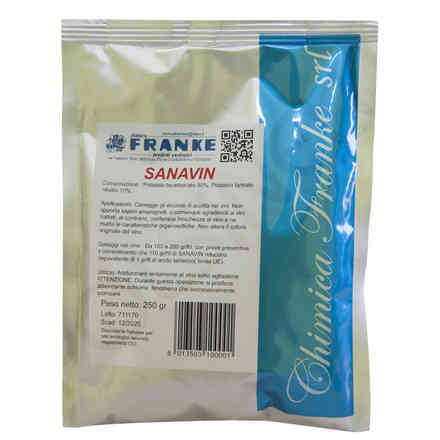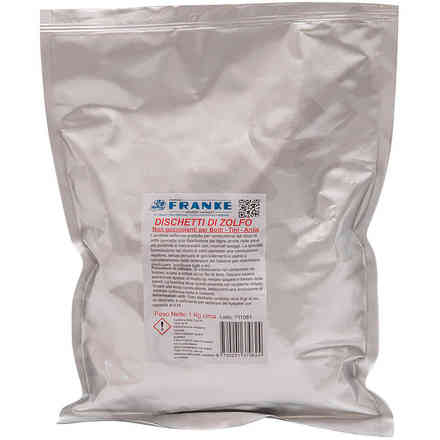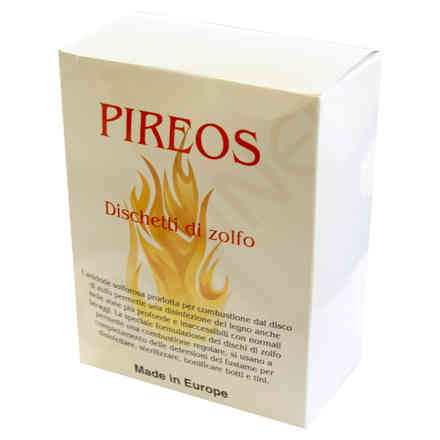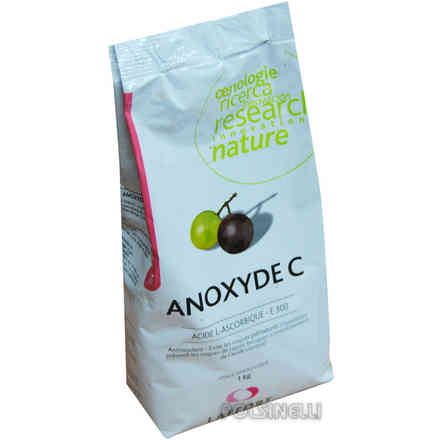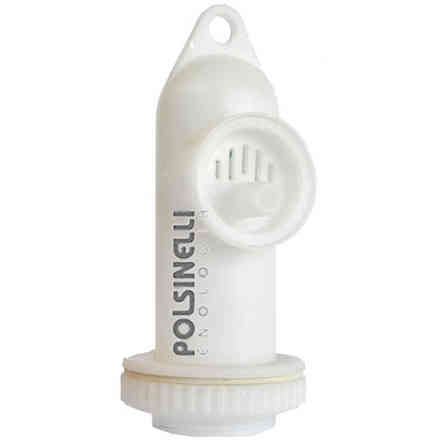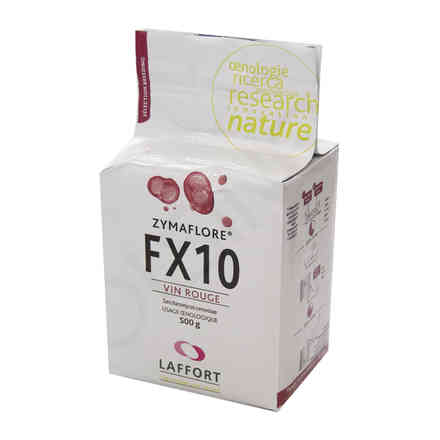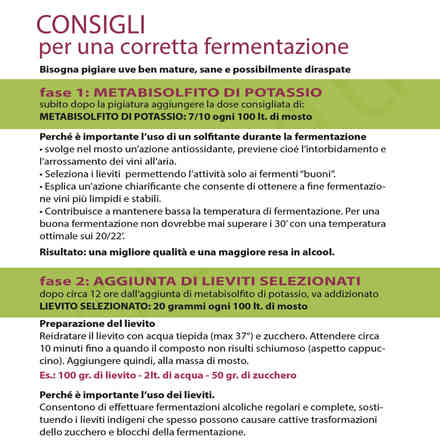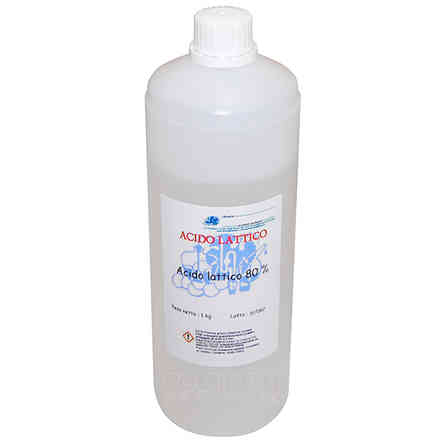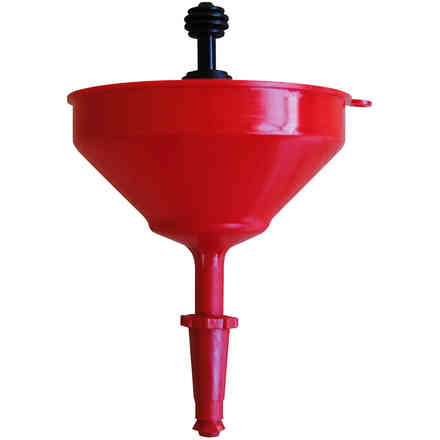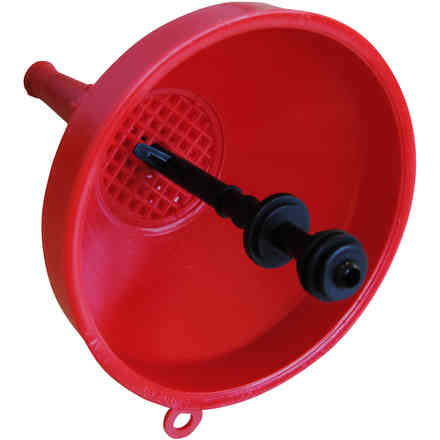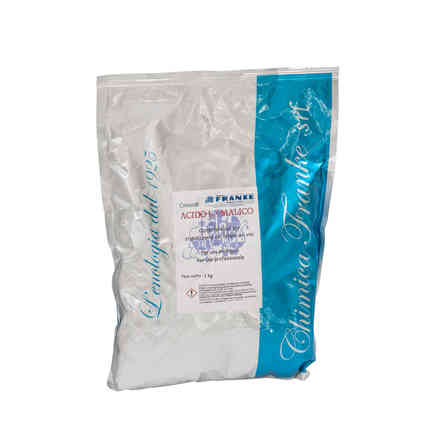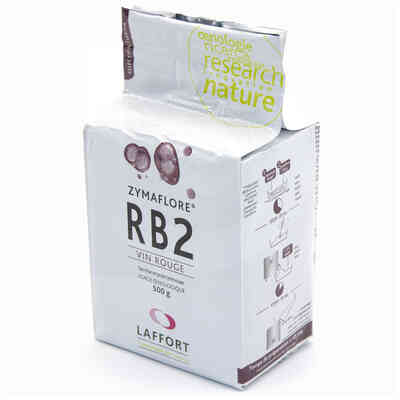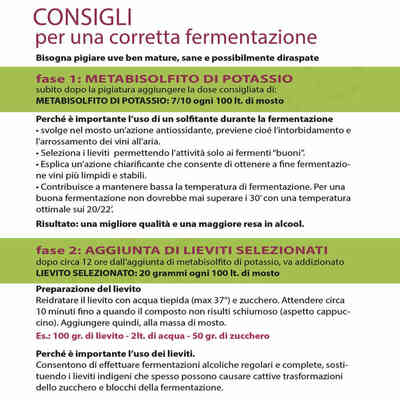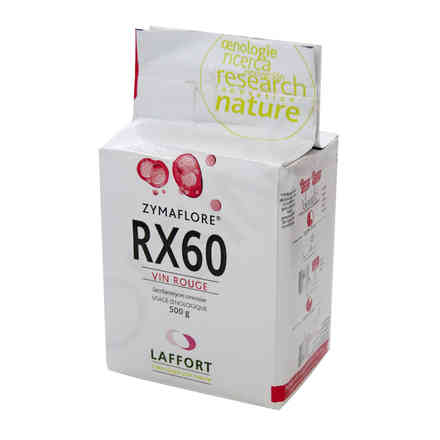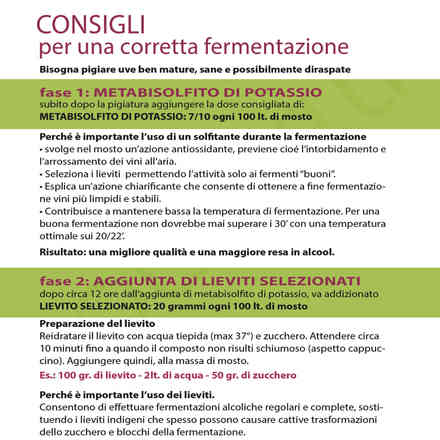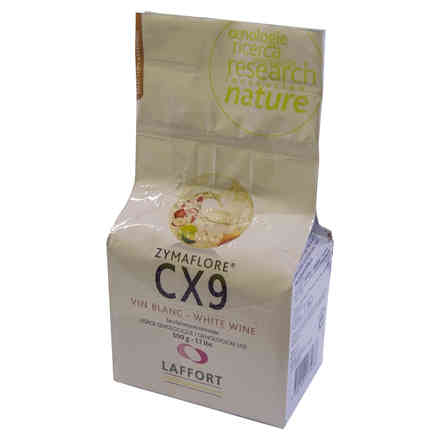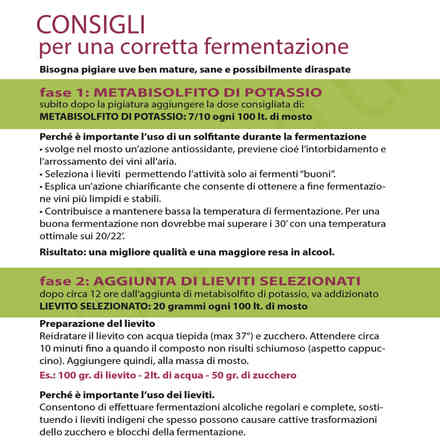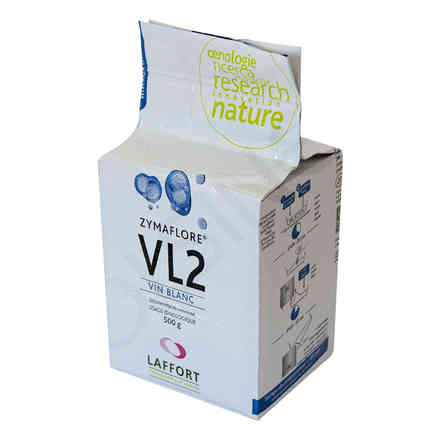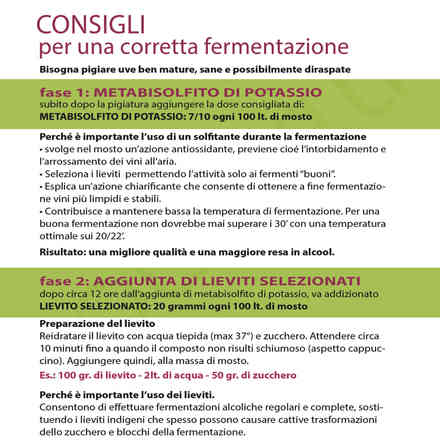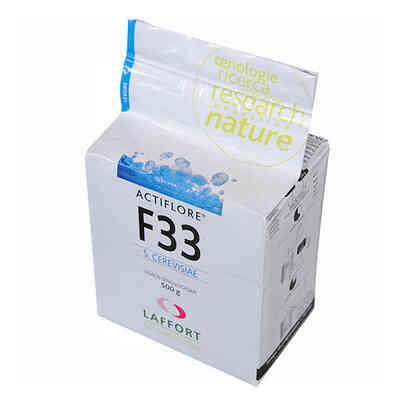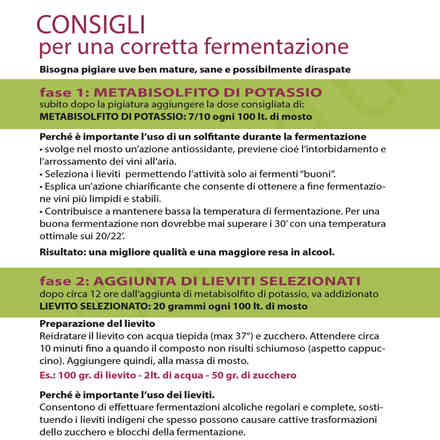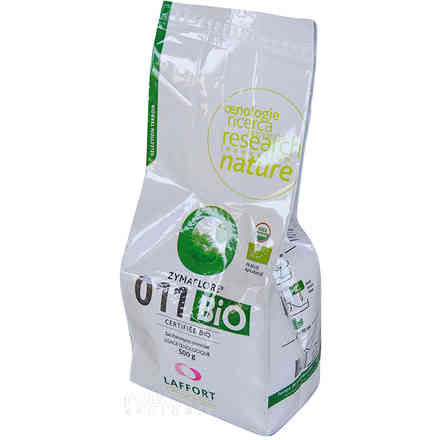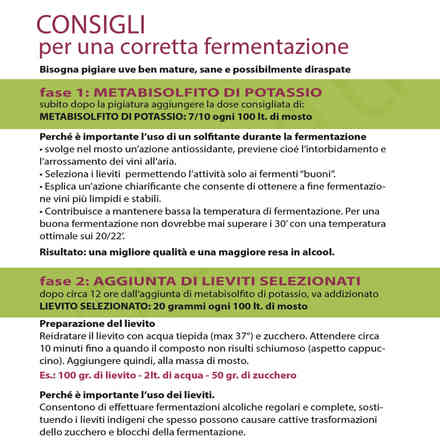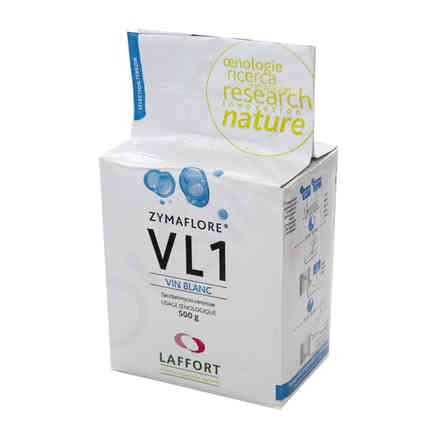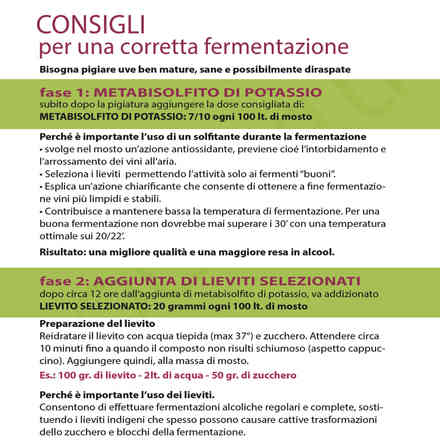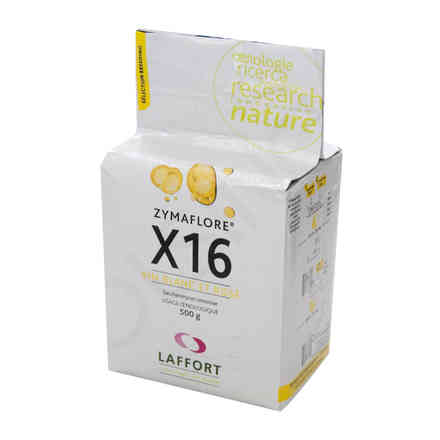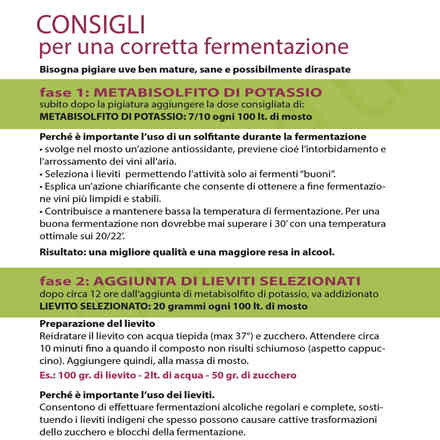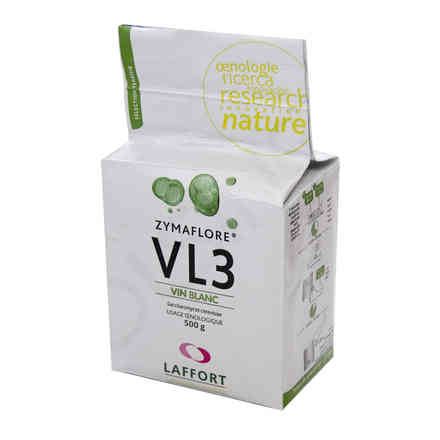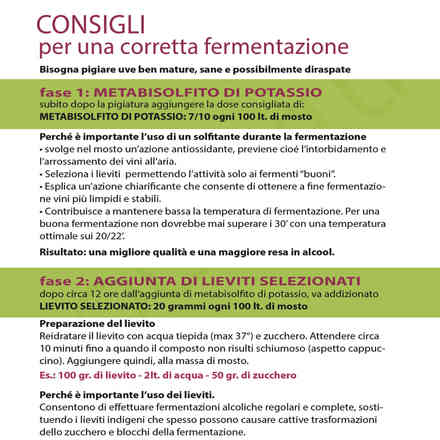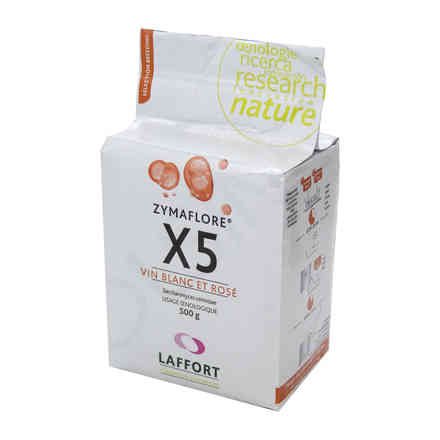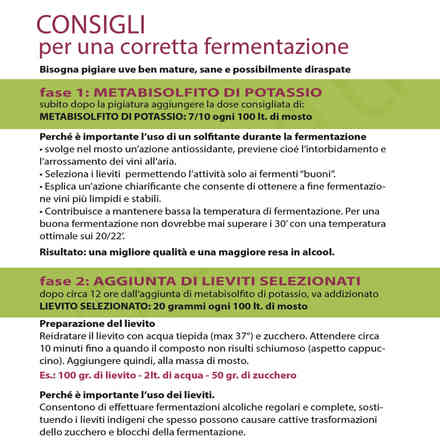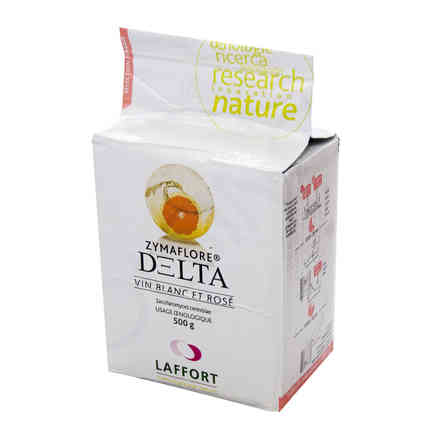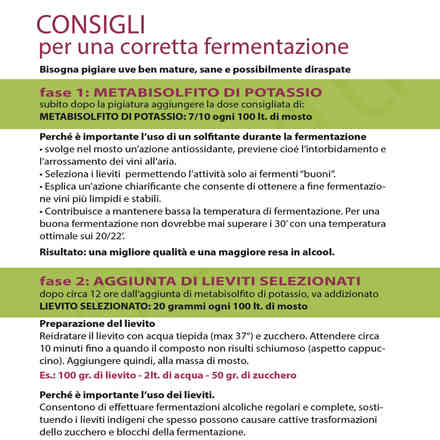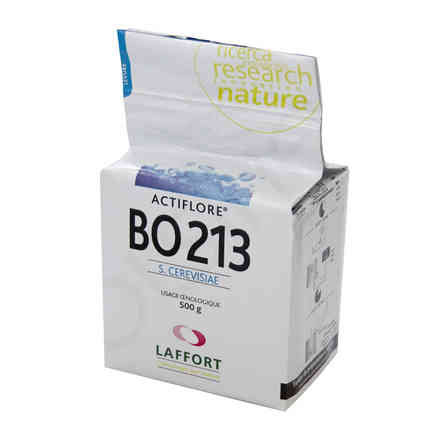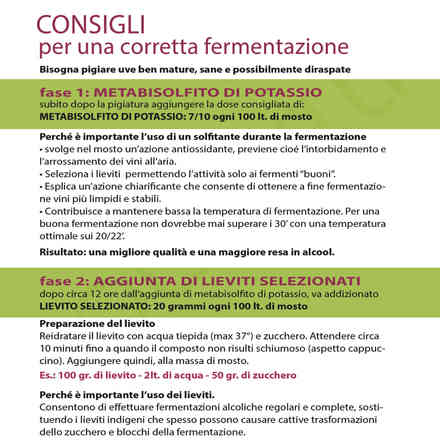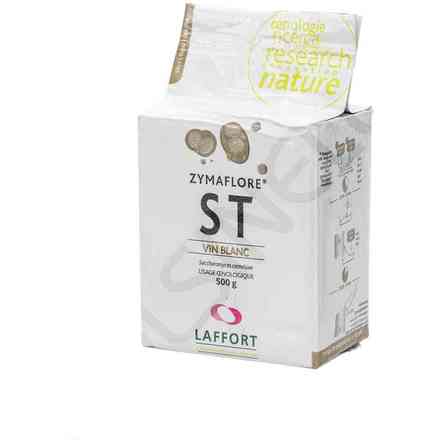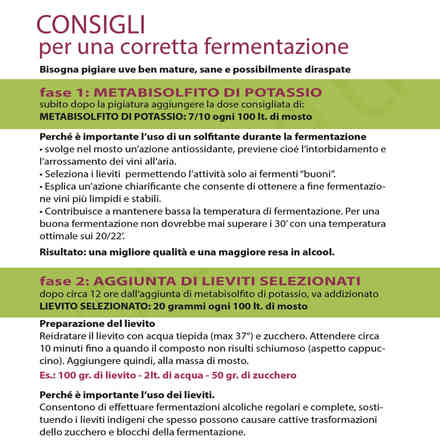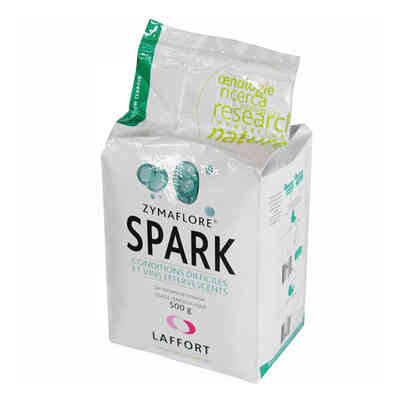Yeast for red wines Zymaflore RB4 (500 gr)
Description
Yeast for red wines Zymaflore RB4 (500 gr)
Saccharomyces cerevisiae yeast for primeur-style fruity red wines.
Selected non-GMO Active Dry Yeast (ADY) for use in winemaking. Qualified for the elaboration of products for direct human consumption in the field of the regulated use in Oenology. In accordance with the current EU regulation n° 2019/934.
Specifications and oenological applications
Strain selected by Sicarex in Beaujolais and verified by the Institut Français de la Vigne et du Vin for the production of primeurstyle fruity red wines, intense and expressive on the nose, mouthfeel and long on the palate. Particularly suited to Gamay, producing intense and complex wines with red fruit aromas.
Fermentation characteristics:
- Very good ability to establish a population.
- Very good fermentation kinetic.
- Low production of volatile acidity and H₂S.
- Favours a quick start to the malolactic fermentation.
Aromatic and organoleptic characteristics:
- Brings out varietal aromas strongly.
- High production of fermentation esters.
Physical characteristics
- Dehydrated yeast (vacuum-packed).
- Aspect: Granular
Chemical and microbiological analysis
- Humidity (%): < 8
- Viable SADY cells (CFU/g): ≥ 2.10¹⁰
- Lactic acid bacteria (CFU/g): < 10⁵
- Acetic acid bacteria (CFU/g): < 10⁴
- Yeasts of a genus other than Saccharomyces (CFU/g): < 10⁵
- Yeasts of a different species or strain (%): < 5
- Coliforms (CFU/g): < 10²
- E. coli (/g): None
- Staphylococcus (/g): None
- Salmonella (/25 g): None
- Moulds (CFU/g): < 10³
- Lead (ppm): < 2
- Arsenic (ppm): < 3
- Mercury (ppm): < 1
- Cadmium (ppm): < 1
Protocol for use
Oenological conditions
- Inoculate with the yeast as soon as possible post rehydration.
- Respect the prescribed dose to ensure a good yeast implantation, even in case of abundance of indigenous yeasts.
- Temperature, yeast strain, rehydration and winery hygiene are also essential for successful implantation.
Dosage
- 15 - 30 g/hL (150 - 300 ppm).
- In the case of prefermentative cold maceration (cold soaking), it is recommended to add yeast at 5 g/hL (50 ppm) during tank filling, in order to dominate the indigenous flora, then to complete with 15 to 20 g/hL (150 - 200 ppm) at the end of maceration, before increasing the must temperature.
Implementation
- Carefully follow the yeast rehydration protocol indicated on the packet. Avoid temperature differences exceeding 10°C (18°F) between the must and the yeast during inoculation. Total yeast preparation time must not exceed 45 minutes.
- In the case of potentially high alcohol concentrations and in order to minimise volatile acidity formation, use DYNASTART®/ SUPERSTART® ROUGE.
Storage recommendation
- Store above ground level in a dry area not liable to impart odours. Ensuring stock is kept at a moderate temperature, in its original, unopened packaging.
- Optimal date of use: 4 years.
Packaging
- 500 g vacuum bag














